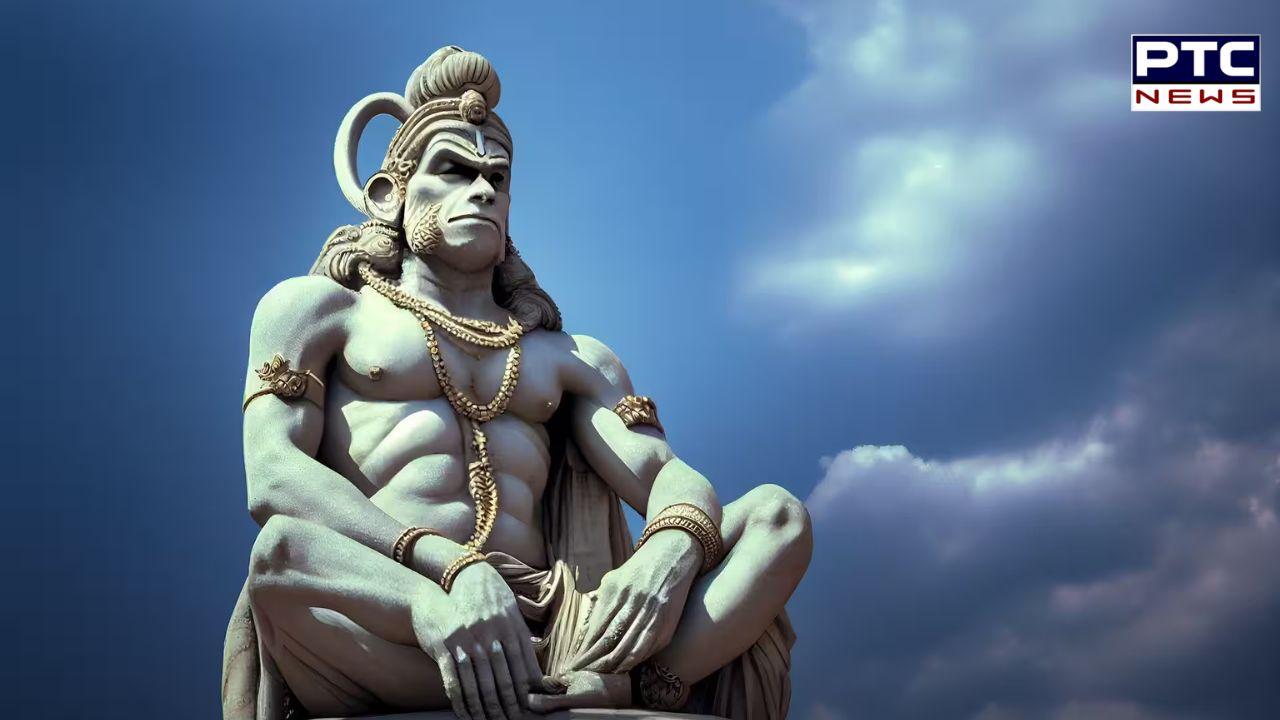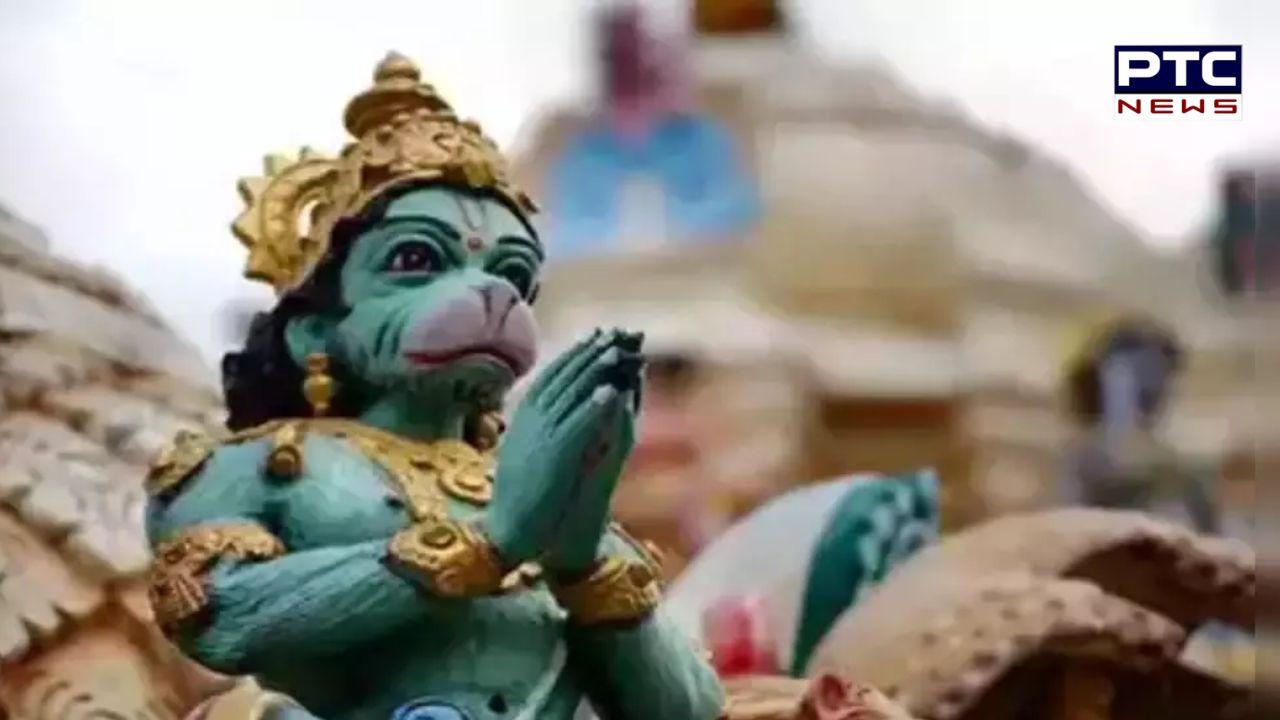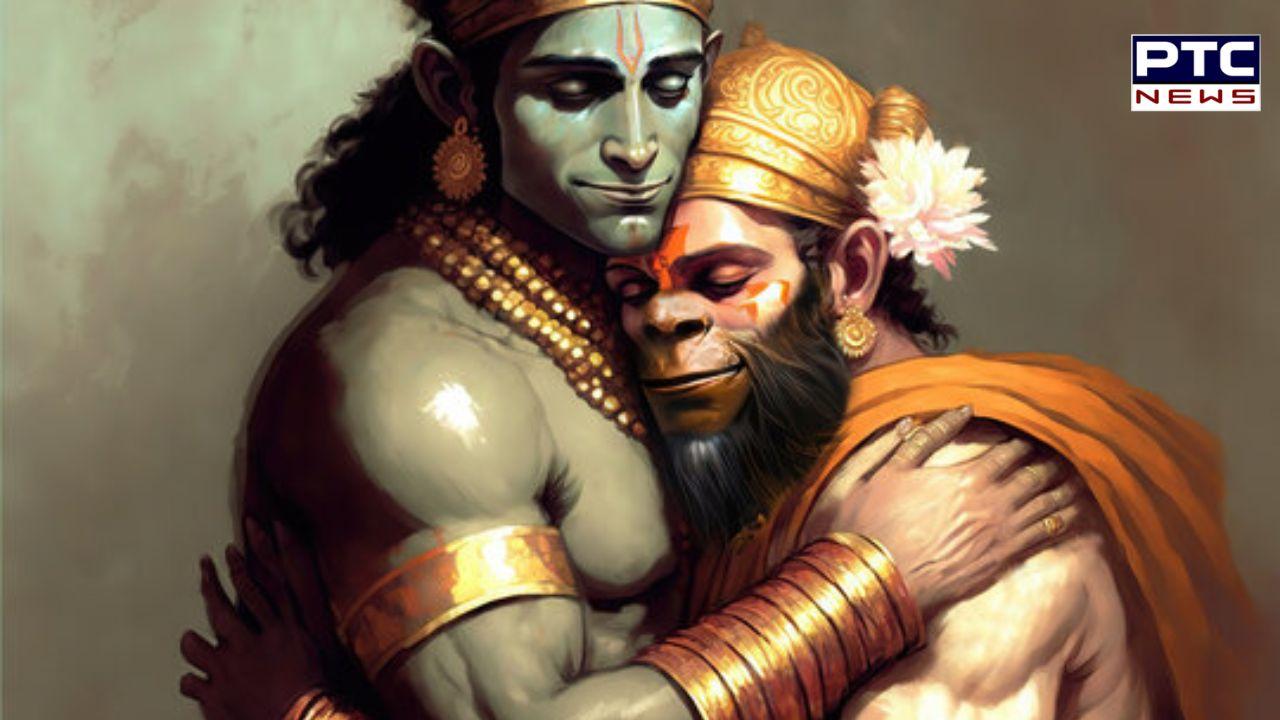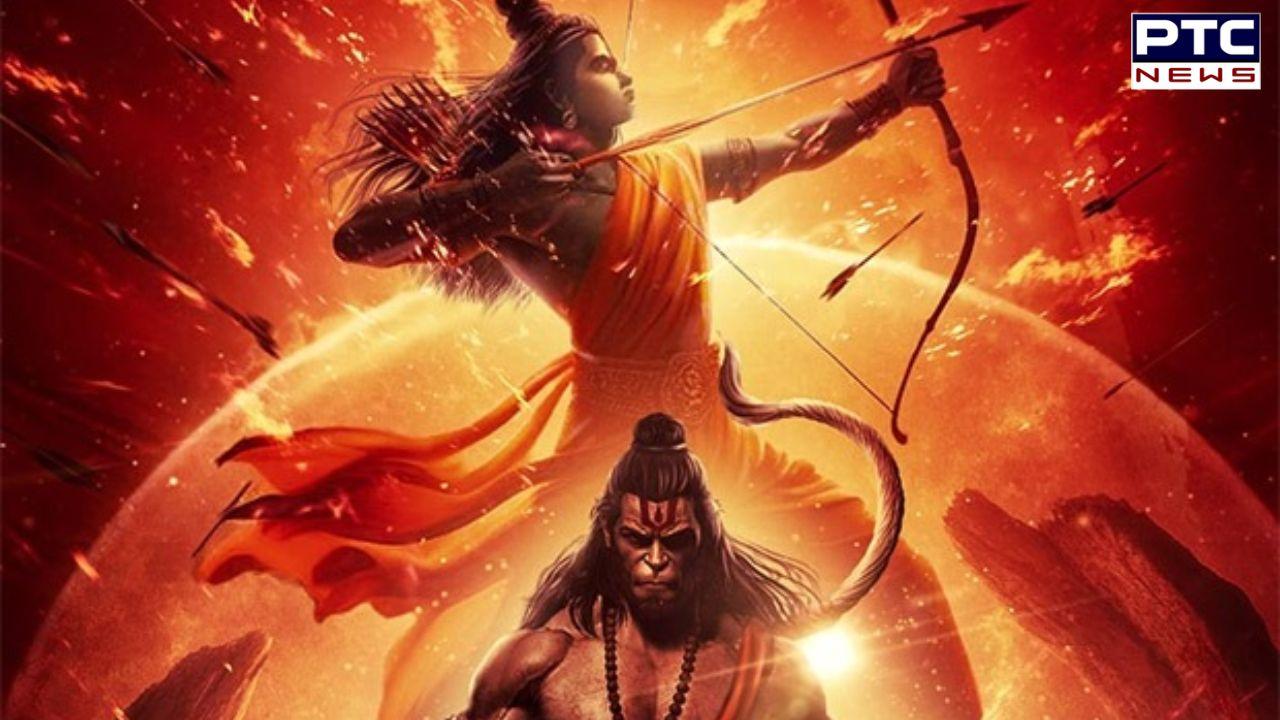

When is Hanuman Jayanti 2024: Know the date, timings, mythological origins, puja vidhi, and more
PTC News Desk: Hanuman Jayanti, observed as Hanuman Janmotsav, is an esteemed Hindu festival commemorating the birth anniversary of Lord Hanuman, the epitome of strength and devotion. In 2024, this auspicious occasion falls on April 23.
Lord Hanuman, revered as one of the Ashta Chiranjeevi (Eight Immortals), holds a significant place in Hindu mythology as an unwavering devotee of Lord Shri Ram. His enduring presence on earth makes Hanuman Jayanti a joyous celebration marked with fervour and enthusiasm by devotees.
Renowned for his unparalleled devotion to Lord Ram, Hanuman played a pivotal role in the ancient epic Ramayana. His legendary feats, including the pivotal role in the battle against the demon king Ravana, continue to inspire generations.

Notably, Hanuman's exceptional strength, stemming from his divine lineage as the son of the wind god Pawan, remains a central theme in his depiction. The iconic episode of lifting the mountain named Sanjeevani with a single hand during the Ramayana symbolises his extraordinary might.
Hanuman Jayanti transcends mere festivities; it symbolises the triumph of good over evil and the power of unwavering devotion. Devotees across the globe engage in various rituals and prayers to seek blessings and divine grace on this auspicious day.
Key highlights of Hanuman Jayanti 2024:
1. Date: Hanuman Jayanti, a sacred Hindu festival, commemorates the birth of Lord Hanuman, born to Mata Anjani. It occurs on the 15th day of the Shukla Paksha in the Hindu month of Chaitra. In 2024, devotees will observe the festival on Tuesday, April 23, with the Purnima tithi spanning from 03:25 am on April 23 to 05:18 am on April 24.
2. Timing: Devotees observe auspicious timings for Hanuman Jayanti prayers and rituals, aligning with traditional practices and lunar calculations.

3. Mythological Origin: The festival finds its roots in Hindu mythology, particularly in the epic Ramayana, where Hanuman's devotion and valor are prominently featured.
4. Puja Vidhi: On Hanuman Jayanti, devotees honour Lord Hanuman by presenting offerings of vermilion, vibrant red attire, fragrant garlands of flowers, roses, delectable ladoos, halwa, and ripe bananas. Elaborate processions and religious ceremonies grace the occasion, amplifying the festive fervour.
The worship rituals entail observing a Tatkalik Tithi (Ratrivyapini) fast, spending the night humbly on the ground, invoking the divine presence of Ram, Sita, and Hanuman, performing an early morning ablution, and making a solemn Sankalp (vow) for the Vrat with water in hand. Devotees then sit before an idol or image of Lord Hanuman, facing the east, offering heartfelt prayers with utmost reverence.
 Hanuman Jayanti holds profound significance as a propitious opportunity to surmount obstacles associated with Saturn. The devout believe that venerating Lord Hanuman on this day dispels negative energies and offers solace from afflictions linked to ghosts and malevolent spirits.
Hanuman Jayanti holds profound significance as a propitious opportunity to surmount obstacles associated with Saturn. The devout believe that venerating Lord Hanuman on this day dispels negative energies and offers solace from afflictions linked to ghosts and malevolent spirits.
Devotees are encouraged to recite the Hanuman Chalisa, invoke the Bajrang Baan, and chant the sacred mantra “Om Ham Hanumate Namah” to invoke the benevolent blessings of Lord Hanuman and usher in divine grace and protection.
5. Significance: Hanuman Jayanti serves as a reminder of Hanuman's indomitable spirit and unwavering devotion to righteousness, inspiring devotees to emulate his virtues in their lives.
As devotees prepare to celebrate Hanuman Jayanti 2024, the air resonates with chants of hymns and prayers, invoking the blessings of Lord Hanuman. May this auspicious occasion bring joy, peace, and prosperity to all devotees, reaffirming the eternal message of strength, devotion, and righteousness embodied by Lord Hanuman.
Hanuman Jayanti 2024: Unveiling the history and profound significance
Delving into the annals of Hindu mythology, the genesis of Lord Hanuman unfurls amidst the ancient tapestry of Treta Yuga, within the sixth Manvantara of Vaivasvata Manu, approximately 2.59 million years ago. These narratives, meticulously preserved in the Uttara Kanda of the Valmiki Ramayana, elucidate the divine origins of this revered deity.

Legend intertwines with destiny as Anjana, the consort of Vanaraja Kesari, the King of Monkeys, becomes the vessel for Hanuman's incarnation. Anjana's path converges with the realm of curses when Muni Vishwamitra, in a moment of unintended disturbance, bestows upon her an affliction.
Desiring absolution, Anjana fervently invokes the grace of Lord Shiva, entreating him to inhabit her unborn child. Thus, Hanuman, bearing the essence of Shiva, descends into mortal existence, embodying the divine convergence of human and celestial realms.
Furthermore, amidst the myriad threads of mythic lore, another narrative finds prominence, weaving a tale of celestial intervention and cosmic alignment. King Dasharatha, amidst his quest for progeny, undertakes the sacred Putrakameshti yagna, seeking divine blessings for offspring.
In a twist of fate, the celestial offering, the sacred payasam, intended for the king, is intercepted mid-flight by a vigilant kite. Through the whims of fate, this celestial ambrosia finds its way into the hands of Anjana, delivered by the gentle breeze of Pawan Deva, the wind god. Thus, ensues the miraculous birth of Hanuman, heralded as the son of the wind, Pawan Putra Hanuman.
Hanuman Jayanti serves not merely as a commemoration of historical events but as a testament to the enduring legacy of devotion and divine intervention. Through the labyrinthine corridors of myth and legend, the figure of Hanuman emerges as a beacon of strength, resilience, and unwavering devotion, inspiring reverence and adulation across millennia.
- With inputs from agencies
